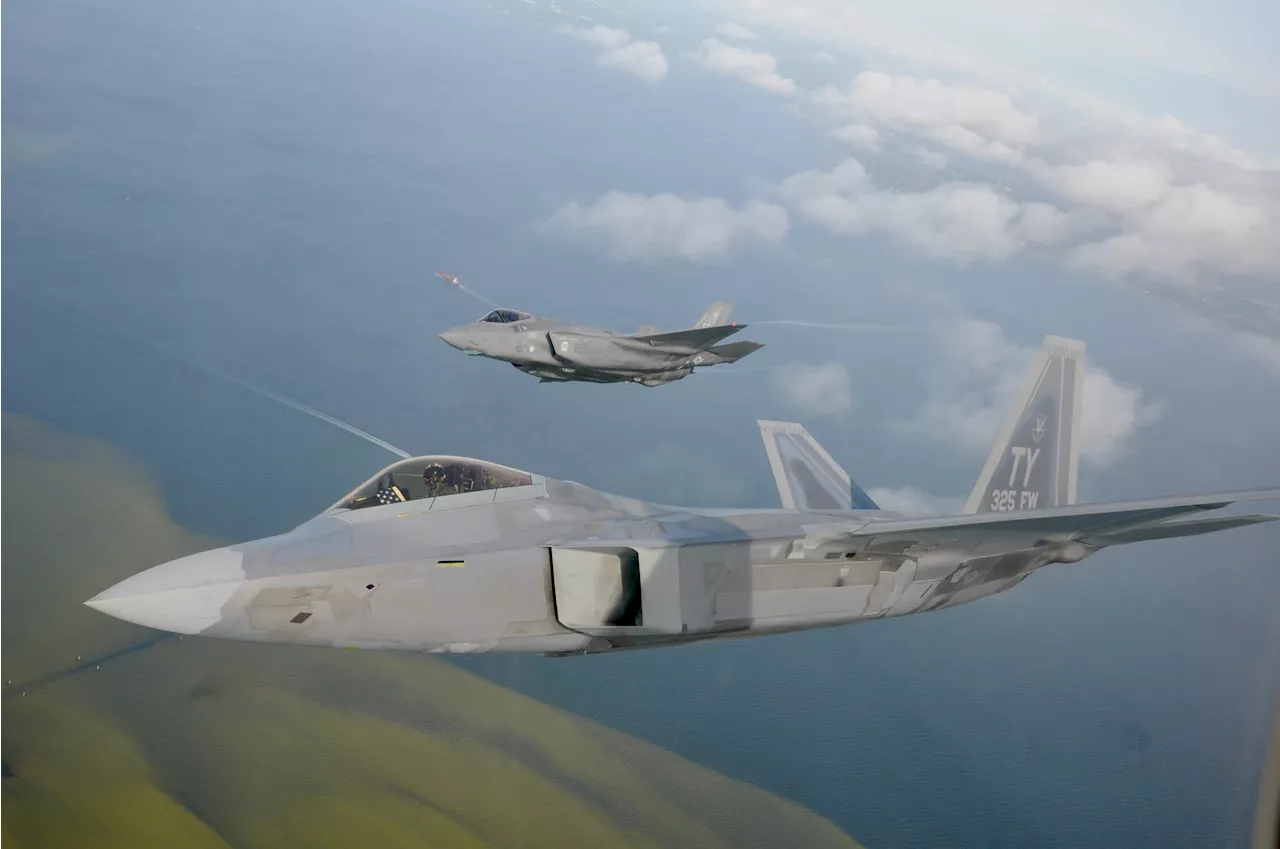The US Air Force has significantly boosted funding for its Next-Generation Adaptive Propulsion (NGAP) program, injecting $7 billion to accelerate the development of prototype jet engines by GE and Pratt & Whitney. This funding is crucial for the NGAP, a key component of the larger Next Generation Air Dominance (NGAD) initiative, and could also impact other advanced aviation programs.
The United States Air Force (USAF) has announced a significant $7 billion funding boost for its prototype next-generation jet engine program, known as the Next-Generation Adaptive Propulsion ( NGAP ). This injection aims to accelerate the research and development efforts of General Electric (GE) and Pratt & Whitney , the two companies leading the program.
The NGAP is a critical component of the broader Next Generation Air Dominance (NGAD) initiative, but its potential applications extend to other advanced aviation programs as well. \A recent daily contracting notice from the USAF reveals that both Pratt & Whitney (now a subsidiary of Raytheon) and GE have received a new $3.5 billion funding ceiling. This funding will support various crucial phases, including design, analysis, rig testing, prototype engine construction and testing, and even weapon system integration. The notice emphasizes the contract modification's focus on delivering a state-of-the-art propulsion system with a flexible architecture, adaptable to the evolving needs of future combat aircraft across various mission profiles. It also highlights the program's aim to digitally transform the propulsion industrial base.\Funding for the NGAP initially began in 2022, with additional contracts awarded to Boeing, Lockheed Martin, and Northrop Grumman – the primary contractors for the NGAD jet program. Each of these companies received approximately $1 billion for their respective research endeavors. However, the latest funding specifically targets GE and Pratt & Whitney to further develop their XA102 and XA103 engine designs, respectively. While detailed information about these engines remains limited, it is publicly known that both are examples of adaptive cycle designs. This means they can dynamically adjust their bypass ratios during flight, enabling them to switch between high fuel efficiency for cruising or increased power for combat situations. This adaptability could prove invaluable in future large-scale conflicts.\Pratt & Whitney claims its XA100-series engine, which likely includes the XA103, offers at least 25% better fuel efficiency compared to the F135 currently powering the F-35. It also asserts a 10- to 20% increase in thrust. This work stemmed from the USAF's former Adaptive Engine Transition Program (AETP), which was initially intended to replace the F135. However, in 2023, the program was repurposed to focus on upgrading the existing F135 engine. Subsequently, additional funding was allocated to continue AETP's work. Beyond the USAF, other U.S. military branches have expressed interest in the NGAP engines, though this interest is not yet concrete. This is particularly relevant considering the U.S. Navy's substantial investment in its 6th-generation carrier-capable stealth fighter, the F/A-XX.\The final operational model of the NGAP is unlikely to be ready before 2032. Nevertheless, this substantial funding injection will almost certainly enable GE, Pratt & Whitney, and the Air Force to progress beyond the prototype stage and deliver tangible results for the NGAD and other ongoing programs
US Air Force Next-Generation Air Dominance NGAP Jet Engine GE Pratt & Whitney Prototype Adaptive Propulsion Aviation Technology
United States Latest News, United States Headlines
Similar News:You can also read news stories similar to this one that we have collected from other news sources.
 Trump Picks Former Air Force Official to Lead Air ForceFormer Air Force navigator and National Reconnaissance Office deputy Troy Meink has been selected by Donald Trump to lead the U.S. Air Force. Meink brings almost four decades of experience in national security, including managing sensitive satellite intelligence and the military's space portfolio.
Trump Picks Former Air Force Official to Lead Air ForceFormer Air Force navigator and National Reconnaissance Office deputy Troy Meink has been selected by Donald Trump to lead the U.S. Air Force. Meink brings almost four decades of experience in national security, including managing sensitive satellite intelligence and the military's space portfolio.
Read more »
 US and China in Race to Develop Next-Generation Fighter JetsThe US and China are locked in a competition to develop sixth-generation fighter aircraft, which are expected to surpass the capabilities of their current fifth-generation jets. Experts say these next-generation fighters will likely feature significantly enhanced stealth, networking, computing, sensing, and engines. While China recently unveiled two new combat aircraft prototypes, the US Air Force continues development of its Next Generation Air Dominance fighter jet and is testing the B-21 bomber, touted as the world's first sixth-generation aircraft.
US and China in Race to Develop Next-Generation Fighter JetsThe US and China are locked in a competition to develop sixth-generation fighter aircraft, which are expected to surpass the capabilities of their current fifth-generation jets. Experts say these next-generation fighters will likely feature significantly enhanced stealth, networking, computing, sensing, and engines. While China recently unveiled two new combat aircraft prototypes, the US Air Force continues development of its Next Generation Air Dominance fighter jet and is testing the B-21 bomber, touted as the world's first sixth-generation aircraft.
Read more »
 Trump Nominates Former Space Force Commander Criticizing 'Woke' Policies for Undersecretary of the Air ForcePresident-elect Donald Trump nominated Lt. Col. Matthew Lohmeier, a former U.S. Space Force commander who claims he was fired for criticizing 'Marxist' DEI initiatives, as the next Undersecretary of the Air Force.
Trump Nominates Former Space Force Commander Criticizing 'Woke' Policies for Undersecretary of the Air ForcePresident-elect Donald Trump nominated Lt. Col. Matthew Lohmeier, a former U.S. Space Force commander who claims he was fired for criticizing 'Marxist' DEI initiatives, as the next Undersecretary of the Air Force.
Read more »
 Trump Appoints Controversial Space Force Veteran as Air Force Under SecretaryPresident-elect Donald Trump has appointed Matthew Lohmeier, a former fighter pilot and Space Force veteran, as the next Under Secretary of the Air Force. Lohmeier was fired from his squadron commander position in 2021 by the Biden administration for criticizing Marxism in the military and promoting critical race theory, which directly contradicted the Biden administration's focus on diversity, equity, and inclusion. This appointment signals a major shift in the Pentagon's approach under the incoming Trump administration.
Trump Appoints Controversial Space Force Veteran as Air Force Under SecretaryPresident-elect Donald Trump has appointed Matthew Lohmeier, a former fighter pilot and Space Force veteran, as the next Under Secretary of the Air Force. Lohmeier was fired from his squadron commander position in 2021 by the Biden administration for criticizing Marxism in the military and promoting critical race theory, which directly contradicted the Biden administration's focus on diversity, equity, and inclusion. This appointment signals a major shift in the Pentagon's approach under the incoming Trump administration.
Read more »
 What Is 'Next-Generation' Fighter Aircraft in US-China Air Power Race?The next-generation fighter aircraft are designed to be superior to the existing most advanced combat jets.
What Is 'Next-Generation' Fighter Aircraft in US-China Air Power Race?The next-generation fighter aircraft are designed to be superior to the existing most advanced combat jets.
Read more »
 US Air Force Eyes Upgrading Cyprus Air Base for Humanitarian MissionsThe U.S. Air Force is exploring ways to enhance Andreas Papandreou Air Force Base in Cyprus, aiming to transform it into a crucial hub for humanitarian operations in the Middle East. Situated strategically close to Lebanon, the base has a history of serving as a transit point for evacuations and aid deliveries during regional conflicts. The planned upgrades include state-of-the-art radar systems to ensure safe air traffic management alongside the island's civilian airport, as well as runway and base expansions to accommodate a larger volume of military aircraft.
US Air Force Eyes Upgrading Cyprus Air Base for Humanitarian MissionsThe U.S. Air Force is exploring ways to enhance Andreas Papandreou Air Force Base in Cyprus, aiming to transform it into a crucial hub for humanitarian operations in the Middle East. Situated strategically close to Lebanon, the base has a history of serving as a transit point for evacuations and aid deliveries during regional conflicts. The planned upgrades include state-of-the-art radar systems to ensure safe air traffic management alongside the island's civilian airport, as well as runway and base expansions to accommodate a larger volume of military aircraft.
Read more »
